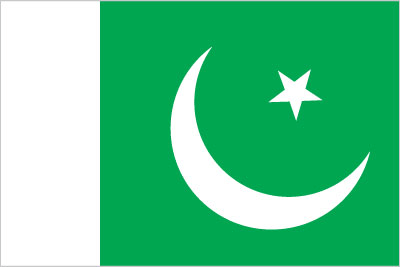Importing from Pakistan


Pakistan Country Profile
Official Name (Local Language) Jamhuryat Islami Pakistan
Capital Islamabad
Population 201,995,540
Currency Pakistani Rupee
GDP $298.1 billion
Languages English; Punjabi; Urdu
Phone Dial In 92
Pakistan Exports Profile
Exports ($m USD) 21,878
Number of Export Products 2,792
Number of Export Partners 194

Pakistan Economic Statistics
Government Website | https://www.pakistan.gov.pk/ |
| Sovereign Ratings | https://countryeconomy.com/ratings/pakistan |
| Central Bank | State Bank of Pakistan |
| Currency USD Exchange Rate | 103.768 |
| Unemployment Rate | 6.1% |
| Population below poverty line | 29.5% |
| Inflation Rate | 2.9% |
| Prime Lending Rate | 5.75% |
| GDP | $298.1 billion |
| GDP Pro Capita (PPP) | $5,100 |
| Currency Name | Pakistani Rupee |
| Currency Code | PKR |
| World Bank Classification | Lower Middle Income |
| Competitive Industrial Performance | 122/138 |
| Corruption Perceptions Index | 117/180 |
| Ease of Doing Business | 136/190 |
| Enabling Trade Index | 122/136 |
Access trade, receivables and supply chain finance
We assist companies to access trade and receivables finance through our relationships with 270+ banks, funds and alternative finance houses.
Get StartedImporting from Pakistan
Pakistan is South Asia’s biggest economy after India, and an important trade partner for the West. Pakistan’s main exports are textiles such as house linens, cottons, and knit products, as well as food products and base metals. It is also the world’s 4th largest rice exporter, an industry that grew significantly ever since India restricted its own rice exports in spring 2024. Its biggest export destination is the US, followed by several European countries and China.
The economy is characterised by a heavy state presence, a difficult business environment, and some of the most protectionist trade policies in the world. The challenging macroeconomic environment and environmental catastrophes, such as the 2022 floods that destroyed much of its agricultural and livestock production, make poverty reduction difficult and lead to uncertainty and reduced foreign investment. However, macroeconomic measures have been improving in 2023, and an IMF loan approved in July 2024 is expected to further strengthen the economy and boost growth.
Pakistan’s trade policy has an anti-export bias, aimed at reducing the trade deficit by restricting imports and encouraging businesses to produce for the domestic market. The share of exports in GDP has been steadily declining in the past 20 years. Exports remain low because of low productivity, which makes many Pakistani products uncompetitive. Exports are further discouraged by high tariffs and limited access to the market and financing opportunities. However, the government has been trying to encourage exports in recent years by rebating import duties and sales taxes for domestic producers exporting abroad.
Importing from Pakistan: What is trade finance?
Although Pakistan possesses unexploited oil and gas resources, its failure to explore and utilize such natural resources made the country highly-reliable on imported oil and petroleum products to meet the energy demands of the nation. It has been forecasted that Pakistan’s oil imports would increase from US $13.22 billion from the initial US $10.09 in the past year.
Pakistan’s import products are made up of petroleum and petroleum products, plastics, transportation equipment, paper and paperboard to name a few. All in all, the total value of these imports could reach US $32.71 billion. The country’s major importing partners would include China which items made up 15.35% of total imports, Saudi Arabia (10.5%), the United Arab Emirates (10%) and the United States (approximately 5%).
Chart Showing GDP Growth Compared to rest of world
GDP Composition for Pakistan
Agriculture
25.2%
Cotton, wheat, rice, sugarcane, fruits, vegetables; milk, beef, mutton, eggs
Industry
19.2%
Textiles and apparel, food processing, pharmaceuticals, construction materials, paper products, fertilizer, shrimp
Services
55.6%
Government services Transportation Other business services Computer and information services Communications services Travel Insurance services Financial services Construction services Cultural and recreational services Royalties and license fees
Map
Top 5 Exports Partners
| Country | Trade | % Partner Share |
| United States | 3,560 | 16.27 |
| United Kingdom | 1,635 | 7.47 |
| China | 1,508 | 6.89 |
| Afghanistan | 1,390 | 6.35 |
| Germany | 1,286 | 5.88 |
Top 5 Exports Products
| Export Product | Number |
| Semi-milled or wholly milled rice | 14.3% |
| Men’s or boys’ ensembles of cotton | 9.1% |
| Uncombed single cotton yarn, with >=85% cotton, | 8% |
| Bed linen of cotton (excl. printed, knitted or | 5.6% |
| Toilet linen and kitchen linen, of terry fabric | 4.3% |
Local Partners
- All Topics
- Pakistan Trade Resources
- Export Finance & ECA Topics
- Local Conferences



















